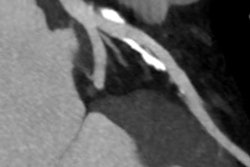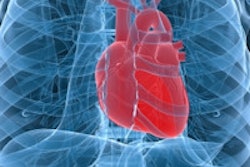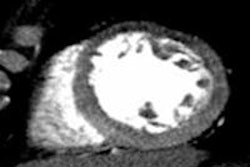
AMSTERDAM - For the first time, medical imaging has a greater role to play in the diagnosis of stable coronary artery disease (CAD) in significant new guidelines launched at the European Society of Cardiology (ESC) Congress 2013, according to a leading German expert.
In particular, stress echocardiography, SPECT, PET, cardiovascular MR (CMR), and coronary CT angiography (CCTA) are recommended for patients with stable chest pain, and local expertise should be considered when choosing the imaging modality.
"These guidelines are extremely important because patients with chest pain form a large patient group, so even a small change in the guidelines has a big impact on the cardiologists treating these patients," said Dr. Stephan Achenbach, professor and chairman of cardiology at the University of Erlangen in Germany. Achenbach chaired the session at the congress and welcomed the ESC's new guidelines for the clarification they provided on the range of new data that had materialized over the past six years.
A significant advance
 Dr. Stephan Achenbach.
Dr. Stephan Achenbach.
Achenbach said the imaging recommendations within the new guidelines represent a significant advance over previous editions; in particular, in relation to the workup of patients with suspected stable CAD. Currently, clinicians, especially in Europe, rely heavily on exercise electrocardiograms (ECG) because they are easy to perform, low cost, and widely available.
"However, the test is actually unreliable because the sensitivity is only around 50%," Achenbach said.
Furthermore, he pointed out exercise ECG was only acceptable if the pretest likelihood of stable CAD was low. According to the 2013 guidelines, if the patient has a higher probability of disease, then a stress imaging test -- echocardiography, nuclear, or MRI -- is recommended. In addition, a class 2a recommendation notes that in selected patients, CCTA can be used.
"This has never been seen before in relation to stable CAD," Achenbach said.
Local expertise is highlighted as another important recommendation in the new guidelines. Uniquely, this reflects valuable practical insights into the management of patients with suspected CAD in a way that has not been evident in previous versions. It is recommended that imaging tests should be used according to the availability of local expertise and equipment.
"This is a completely new reflection on the practical use of tests. In reality, not all centers have the same level of expertise in imaging analysis," Achenbach noted. "If your center has an MR specialist, then choose MR. If your center has a CT specialist, then choose CT. It may be good for radiologists to have at least one area of particular expertise so it can used in patients rather than offering everything."
Pretest probability of stable CAD
Launching the new guidelines at this year's ESC Congress, task force chair Dr. Udo Sechtem from Robert-Bosch-Krankenhaus (RBK) in Stuttgart, Germany, said another new aspect was the diagnostic algorithm was now based on pretest probability, in line with the 2010 U.K. National Institute for Health and Clinical Excellence (NICE) guidelines on chest pain of recent onset.
"The estimation of pretest probability is based on the latest data measuring the prevalence of coronary artery stenosis in current large cohorts of male and female patients of various ages with various clinical presentations," Sechtem remarked.
Pretest probability is closely related to age, gender, typicality of symptoms, and typicality of pain. For example, a 75-year-old with typical chest pain has a 90% likelihood of CAD, while a 35-year-old woman with relatively untypical chest pain has less than 5% pretest likelihood of CAD. Consequently, the diagnostic tests need to change to reflect the patient's risk profile.
Achenbach noted some cardiologists were relatively surprised at the preprobability recommendation. "They recommend no testing at all if the pretest likelihood is less than 15%. In these patients, testing can actually be harmful due to the chance of false results rather than accurate ones," he said.
Although these guidelines are based on the 2010 NICE recommendations, the latter have limited use in practice because the emphasis is on the use of CT when in reality, certain patients cannot tolerate CT imaging for a variety of reasons.
Postdiagnosis imaging
After diagnosis of stable CAD, the guidelines suggest revascularization is indicated for patients found to have greater than 10% ischemia as determined by imaging. According to the new guidelines, imaging should also be used for assessment of persistent angina if medication fails to control it adequately.
The full guidelines can be accessed by clicking here.



















